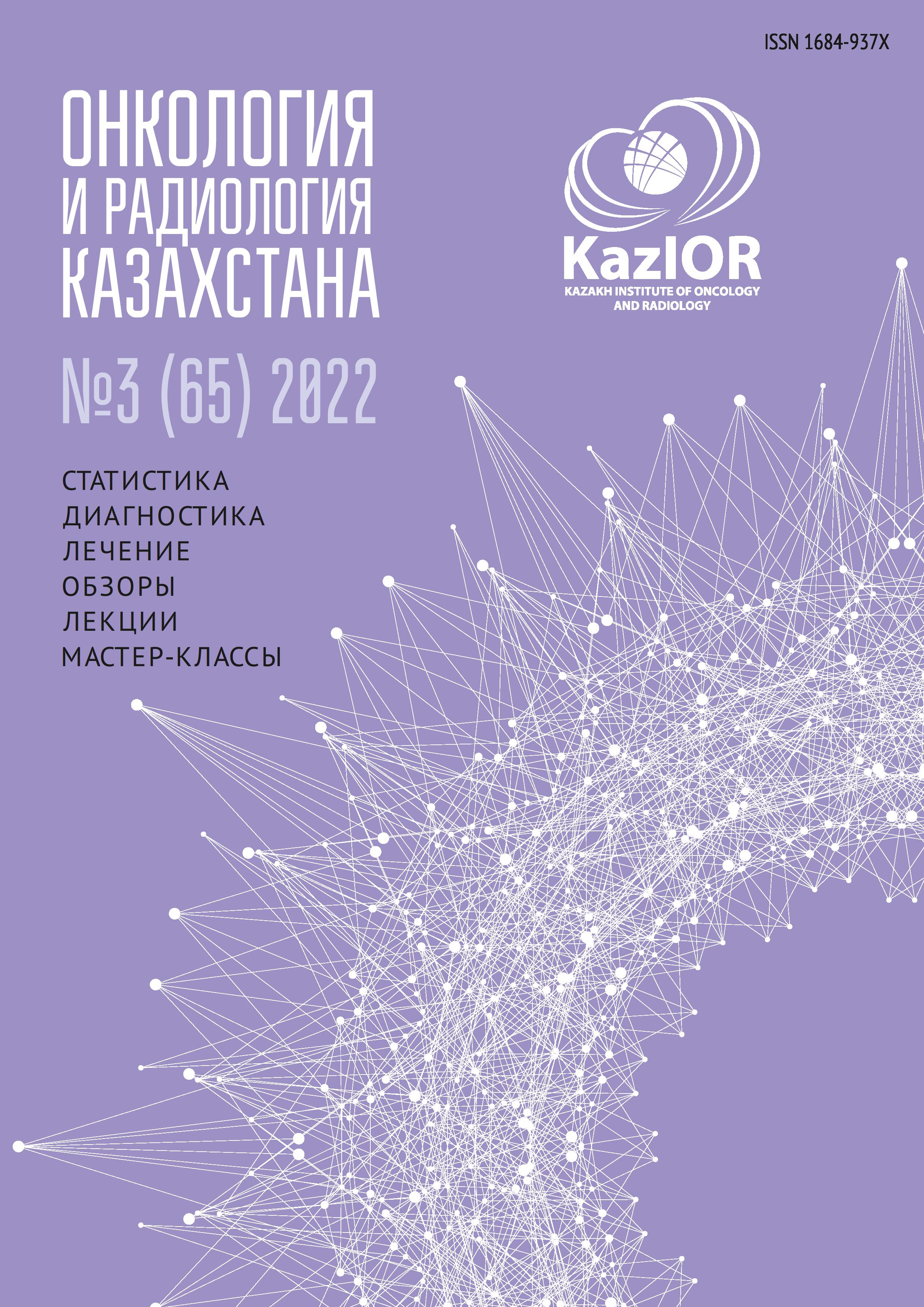The role of machine learning in the development of a model for predicting the survival of lung cancer patients in the Republic of Kazakhstan
Keywords:
lung cancer, prognostic significance, machine learning, relapses, overall survivalAbstract
Relevance: The 5-year overall survival rate(s) in NSCLC p-stage IA is 73%, and the recurrence rate in radically treated patients is almost 10%.
The study aimed to evaluate the prognostic significance of several clinical and morphological factors and apply machine learning algorithms to predict the results of overall survival of patients with lung cancer.
Methods: The forms 030-6/y C34 – lung cancer (n=19,379) from the EROB database for 2014-2018 were analyzed, and the impact of risk
factors on overall survival was assessed using the Kaplan-Meier method. Accordingly, the training data set for constructing forecasting models included 19,379 observations and 15 factors. The machine learning algorithms such as Random Forest Classifier, Gradient Boosting Classifier, Logistic Regression Model, Decision Tree Classifier, and K Nearest Neighbors (KNN) Classifier were implemented in the Python programming language. The results were evaluated by constructing an error matrix, calculating classification metrics: the proportion of correctly classified objects
(accuracy) during training and validation (validation), accuracy (precision), completeness (recall), Kappa-Cohen.
Results: In our study, 19,379 patients were analyzed, including 15,494 men (79.95%) and 3,885 women (20.04%). At the time of the study, 6,171 men (39.8%) and 1,962 women (49.5%) were alive. Median survival was 8.3 months (SE – 0.154 months, 95% CI – 7.96-8.56) in men and 15.43 months (SE – 1.0 months, 95% CI – 13.497-17.363) in women. At diagnosis, 1,037 patients (5.35%) had stage I disease, other 4,145 (21.38%) had stage II. Most patients (61.4%) had advanced stage NSCLC: 9,189 people (47.4%) were diagnosed with stage III, and 4,655 (24%) – with stage IV. The reliability of differences in median survival (χ2=3991.6, p=0.00) indicated the prognostic significance of the tumor process stage and its influence on the patient’s survival. Also, the revealed significant difference in the median survival of patients with various morphological forms of lung cancer suggests the prognostic significance of the morphological factor (the difference between those indicators was statistically significant, χ2=623.4 p=0.000).
Conclusion: Machine learning models can predict the risk of fatal outcomes for patients after surgical treatment and registration in the EROB database. The creation of patient-oriented systems to support medical decision-making makes it possible to choose the optimal strategies for adjuvant therapy, dispensary observation, and frequency of diagnostic studies.

